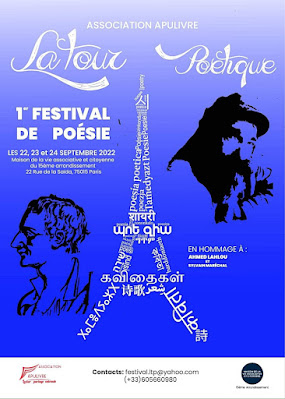“Yes. Tell me, are you familiar with the Deauville Film Festival?”
“Dough ville? Uh, no.”
“Deauville is in Normandy. For six years now they have been holding a film festival there dedicated to American cinema. And this year you will be attending. What do you think of that?”
“I, I don’t know what to say. This is kind of the last thing I expected.”
In Chapter 12 of Lautaro’s Spear, our protagonist Dallas Green gets thrown a curve. Out of the blue his boss tells him he’s being sent along with a reporter to take photographs at a film festival in France. It turns out to be a godsend because Dallas needs an escape from his chaotic life in 1980 in San Francisco where his affair with a married woman is unraveling disastrously and his friendship with a drummer in an aspiring rock band has turned a bit weird.
The weather was very much like San Francisco with a cold, stiff breeze bearing down on us. The terrain was a lot flatter though. I could smell the ocean even if I could not see it. I had the distinct impression it was not very far ahead of us. We stopped in front of a large and impressive building that looked like some sort of castle with high windows and columns at the front entrance.
“This is the Casino,” she said, pronouncing it “ca zee no” the way the French would say it. “This is where we will be tonight for the opening.”
At the time I wrote Lautro’s Spear, I had never been in Deauville. I had lived in France for a year as a student many years previously, and I had visited Normandy then and since, but I had no actual memories of that particular vacation spot to draw on. I had to rely on research and imagination in describing Dallas’s impressions of the place.
“So, how accurate did your research turn out to be?” asked an extremely affable taxi driver named Benoît. He was driving us to Le Havre to catch a ferry back to Ireland. Benoît had rescued us five days earlier when an unreliable local bus system had left us stranded in the delightful town of Honfleur. I had told him about my novel and that I was keen to see how good a job I had done in conjuring the place without actually having been there.
After a major birthday several months ago, I decided it was finally time to follow in my fictional alter ego’s footsteps and experience the Festival du cinema américain de Deauville myself—43 years after Dallas had been there. Accompanied by wife and daughter, I spent a glorious five nights and four days attending the film festival. Of course, in four decades much had changed. The main venue for the big events is now the elaborate CID (Centre international de Deauville) situated between the Casino and the town’s fabulous beach. The beach itself looked exactly like every photograph I had ever seen of it with its iconic colorful umbrellas on the wide expanse of sand and the boardwalk that functions as a virtual walk of the stars with famous movie names adorning the long line of beach cabins.
We made a stop at one famous name, that of Clint Eastwood. He was at the 1980 film festival to screen his movie Bronco Billy and is one of several real-life attendees mentioned in my novel. In fact, he has sort of a walk-on cameo. On Eastwood’s beach cabin was a poster highlighting the fact that his son Kyle had participated in the opening night festivities of this year’s festival, marking the release of his album Eastwood Symphonic, dedicated to the music of his father’s movies. An accompanying documentary Eastwood Symphonic: A Family Affair was also screened during the week. If I had been better organized, I might have tried to crash the event in an effort to make contact with Kyle and shove a copy of Lautaro’s Spear into his hand. Instead, I dropped by the festival office and left a copy with two staffers who were quite gracious upon learning about the book’s existence and receiving a copy.
It was a strange experience seeing the hotel where Dallas stayed during his time there and where he first spotted the love of his life, Valérie Destandau. And to walk along the beach where the two of them strolled one night and she first mentioned her boyfriend back in Bordeaux. While there, I enjoyed much warmer weather than Dallas did. I’m pretty sure I checked the weather records and found that it would have been cool early in that September of 1980. Anyway, that is how I described it. Benoît sort of verified as much when he told us that the warm weather we came into was in stark contrast to the cool, wet weather of the previous week.
“I almost forgot,” he said. “There were some photos on one of your film rolls. They were of a woman. Nobody here recognized her. We thought they might have been for your personal use.”
I took the envelope into the darkroom for privacy. I knew immediately what photos they were, and I wanted to look at them alone. One by one I pulled them out of the envelope and stared. The sight of Valérie’s laughing face was more than I could bear. There she was on the beach in Deauville in the darkness of the evening. She looked embarrassed and amused at the same time. It was the evening she taught me the word galoche. I missed her so much. I loved her so much.
I will have to re-read chapters 16 through 23 more carefully to determine what mistakes or misrepresentations I might have inadvertently made. Benoît suggested that I might want to release a revised edition of the book. Hopefully, it won’t come to that.
If you would like to know some more about my visit to Deauville, particularly the movies I saw there, I invite you to read my recent post on my movie blog.














